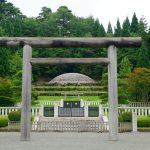
Liberation Day in Albania
In Albania, the 29th of November is celebrated as Dita e Çlirimit, or in English: Liberation Day. This holiday commemorates the date during World War II when the occupation of the country by the Axis Powers ended. Because this day follows Albania’s Independence Day, the two holidays are observed as one extended patriotic celebration.
The holiday is observed with parades, concerts, carnivals, festivals, and even fireworks. These two days are a public holiday for the general public, and many businesses, schools, and government offices are closed. This holiday is observed not only in the capital of Tirana but is also celebrated by Albanians living in other countries.
The History of Albanian Liberation Day
On April 7th, 1939, Benito Mussolini’s forces invaded the Kingdom of Albania, and within five days, the country was under Fascist Italy’s control. In September of 1943, Italy was defeated, and Nazi Germany decided to invade the country.
At this point, however, the National Liberation Front had already been established to resist Italy, and now that resistance turned towards overthrowing the German occupation of their country. On November 29th, German forces were finally pushed out of the country.
Observing Albanian Liberation Day
Most of the two-day celebration of Independence and Liberation Day occurs in Tirana, but these events are also observed throughout the rest of the country. There are parades, sporting events, concerts, and the raising of the Albanian flag. The entire two-day period is observed as a public holiday—meaning that most people have the day off, except for perhaps essential workers.
There is also a wreath-laying ceremony at the National Martyrs Cemetery of Albania in the presence of Albania’s President, the Prime Minister, the Ministry of Defense, and the Chairmen of the Parliament. This event is usually attended by lesser government officials and diplomats as well.








